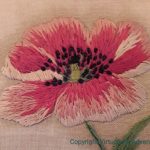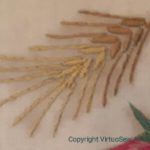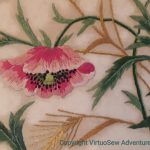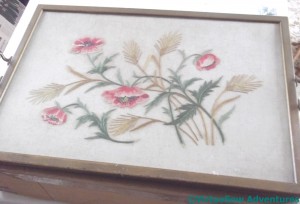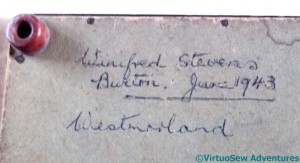Tag: Poppies and Wheat
Poppies And Wheat, Cleaned and Conserved
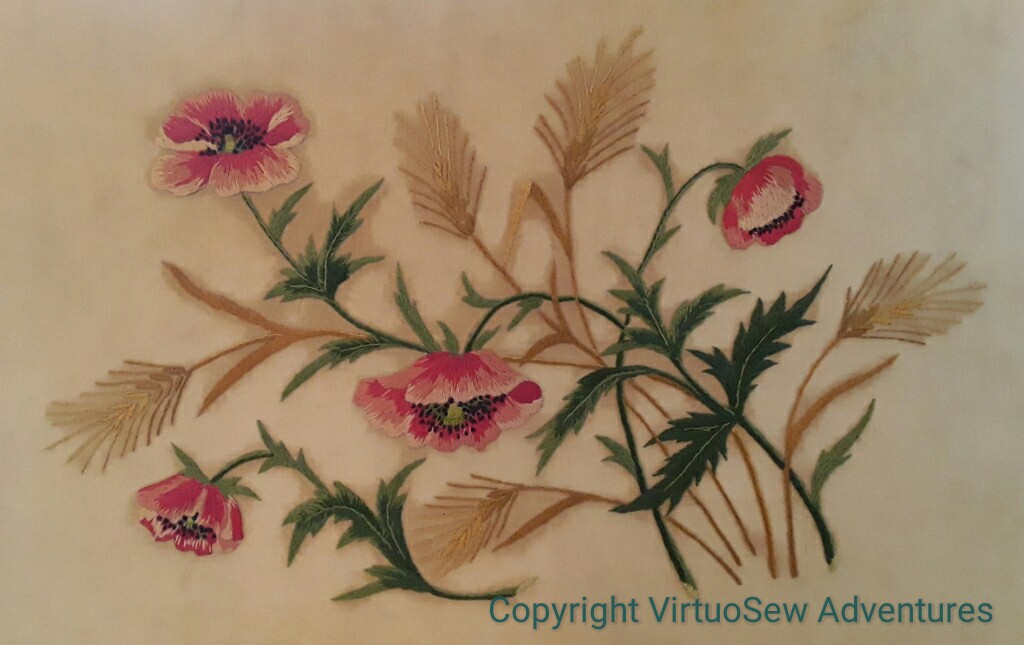
Some of you may recall that some time ago, my mother and I were planning to reframe one of my Grandmama’s embroideries, and discovered to our horror that it had been glued to a backing board made of strawboard.
In due course, we found a textile restorer, not too far away, and I took it to her. And now we have it back again. In the course of the work, it was discovered that two different sorts of glue had been used. One of them was unstuck fairly easily, but a particularly acidic glue had been used on the back of the embroidery itself – almost as if the framer did not believe the work had been finished off properly. Which it had – apparently it was very difficult to find some threads to take out to test for colourfastness!
- Poppy – Brighter and Lighter
- Wheatear – Brighter and Lighter
- Further Detail – Brighter and Lighter
The fabric and thread are both much brighter than they were, but the very acidic glue that was used is the reason for the bloom of staining around the embroidery. It’s much reduced, but unfortunately it wasn’t possible to remove it entirely.
So, Gentle Reader – be careful with glues and boards. Avoid if you can, use neutral-pH as far as you can, or someone in the future will be muttering imprecations in your direction!
Poppies and Wheat – a closer look at Grandmama’s embroidery
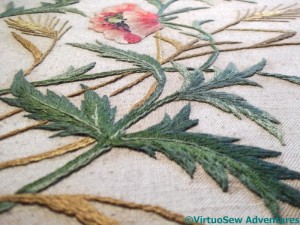
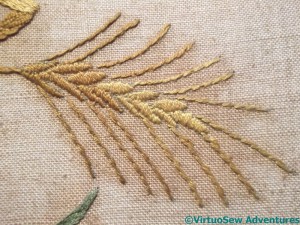
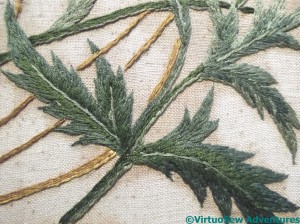
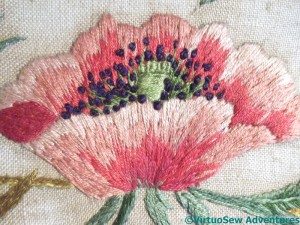 When we took the tray to pieces to remove the embroidery, we had a Nasty Shock.
When we took the tray to pieces to remove the embroidery, we had a Nasty Shock.
The fabric was glued to the backing board and cut off flush with it. So much for our blithe expectation that we would be able to remount the fabric – carefully, of course! – and then get it properly framed to advantage.
In retrospect, we should maybe have guessed from the staining around the stitching that maybe some glue had been involved, but since I always mount over padding, it would never have occurred to me that Grandmama’s framer would have done anything else, still less that the legendary Miss Hunter would have presided over all that beautiful embroidery and then permitted it to be mounted onto any old piece of board using any old glue that happened to be to hand!
The embroidery is worked in long and short stitch, satin stitch, stem stitch, and French knots. I think Grandmama used two strands of stranded cotton throughout, and as it was wartime I’m impressed that she managed to gather ten different colours of thread for it.
It’s a salutary reminder to me that a riot of ornamental stitches and overdyed threads isn’ t always the very best way to achieve a striking result.
We are going to ask a textile conservator to have a look at the piece as it is, glued to its backing board, and give us some advice about the next step. Grandmama would be in pleats with laughter at the idea of any of her embroidery going to a conservator, but I hope she would be secretly pleased as well…!
Poppies and Wheat – Another of Grandmama’s Pieces (Introduction)
The design for this tray was embroidered by my Grandmama during the period when she and her sister and all their children were evacuated to Burton in Westmorland during the Second World War.
We know that because it has been signed on the back!
Besides, my mother remembers it being used on ceremonial occasions. It was always a trial – it’s very heavy (because of the glass), rather slippery (glass again) and doesn’t have much of a rim to keep what’s on it safe. Especially with four children and a dog in the house.
In fact Grandmama, and now my mother, both resorted to propping it up somewhere and using it as a cross between a picture and an ornament. It makes a rather large ornament, too. I’ve seen mirrors over fireplaces that weren’t much bigger!
And of course – again because of that wretched glass – most of the time you can’t really see the embroidery for the reflections. Which is a pity, because it is exquisitely worked, probably one of the pieces overseen by Grandmama’s embroidery teacher, Miss Hunter. Recently my mother decided to take it out of the tray, find some way of cleaning it of some of the discoloration, and mount it properly as an embroidery. Naturally we will find some way to remount the signature from the back as well.
Needless to state, this turned out not to be as easy as we might have hoped.

